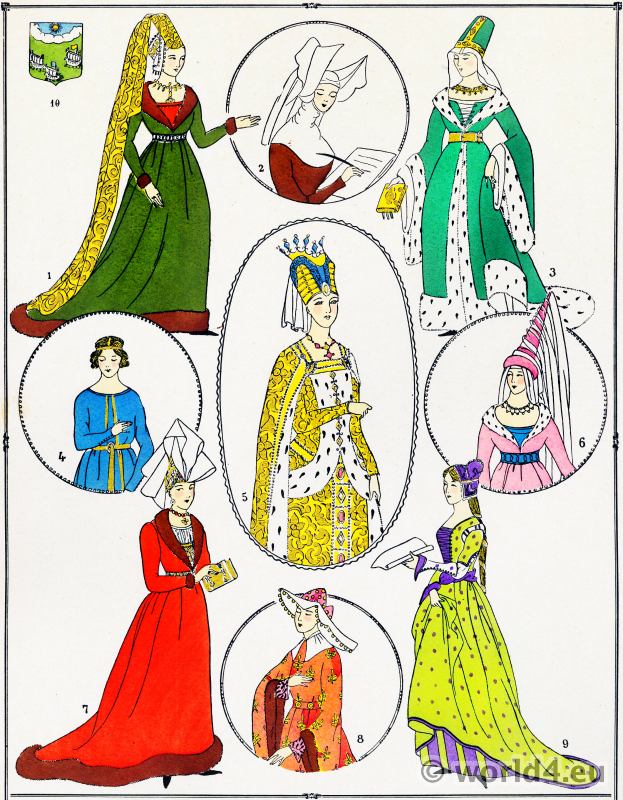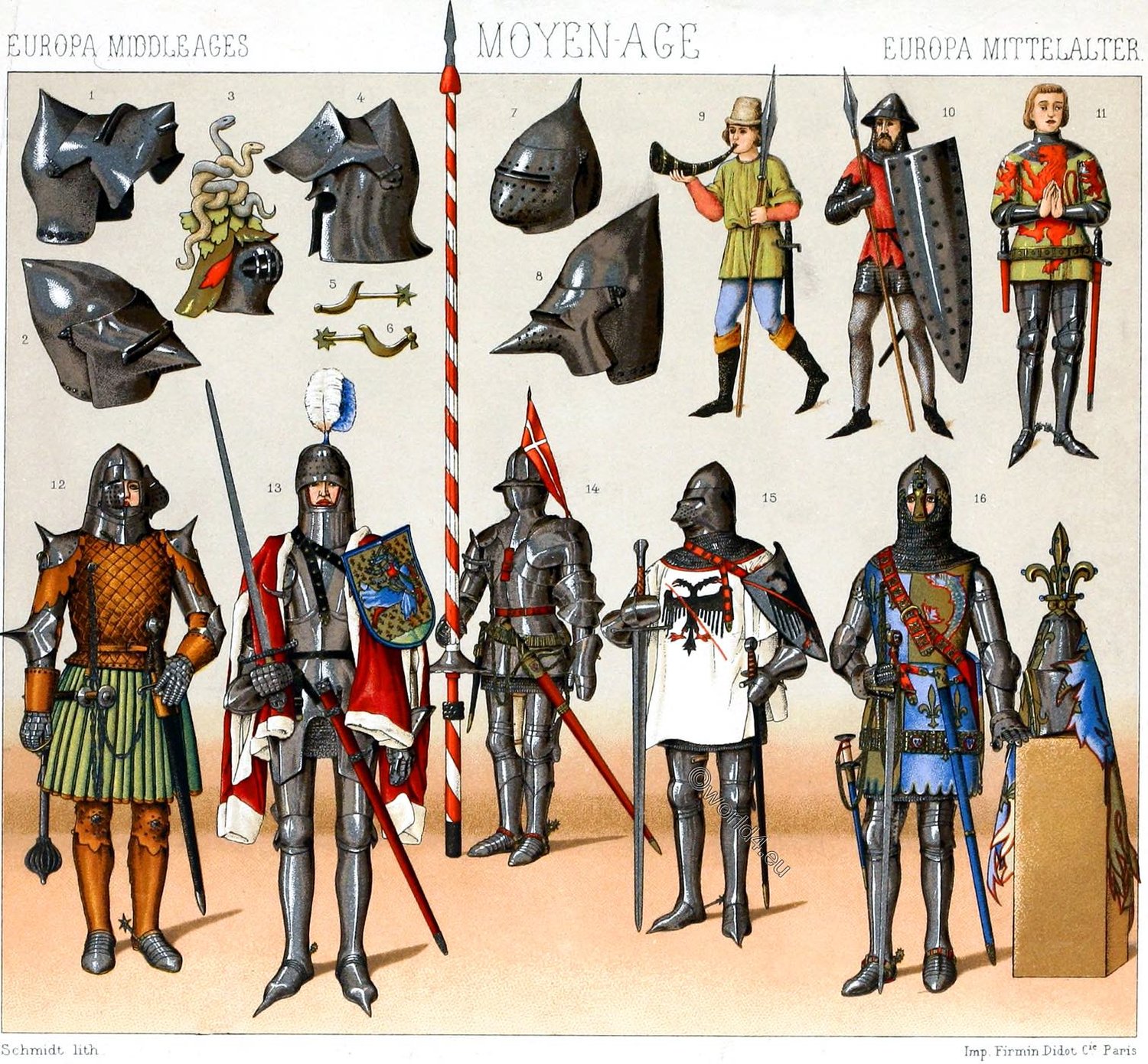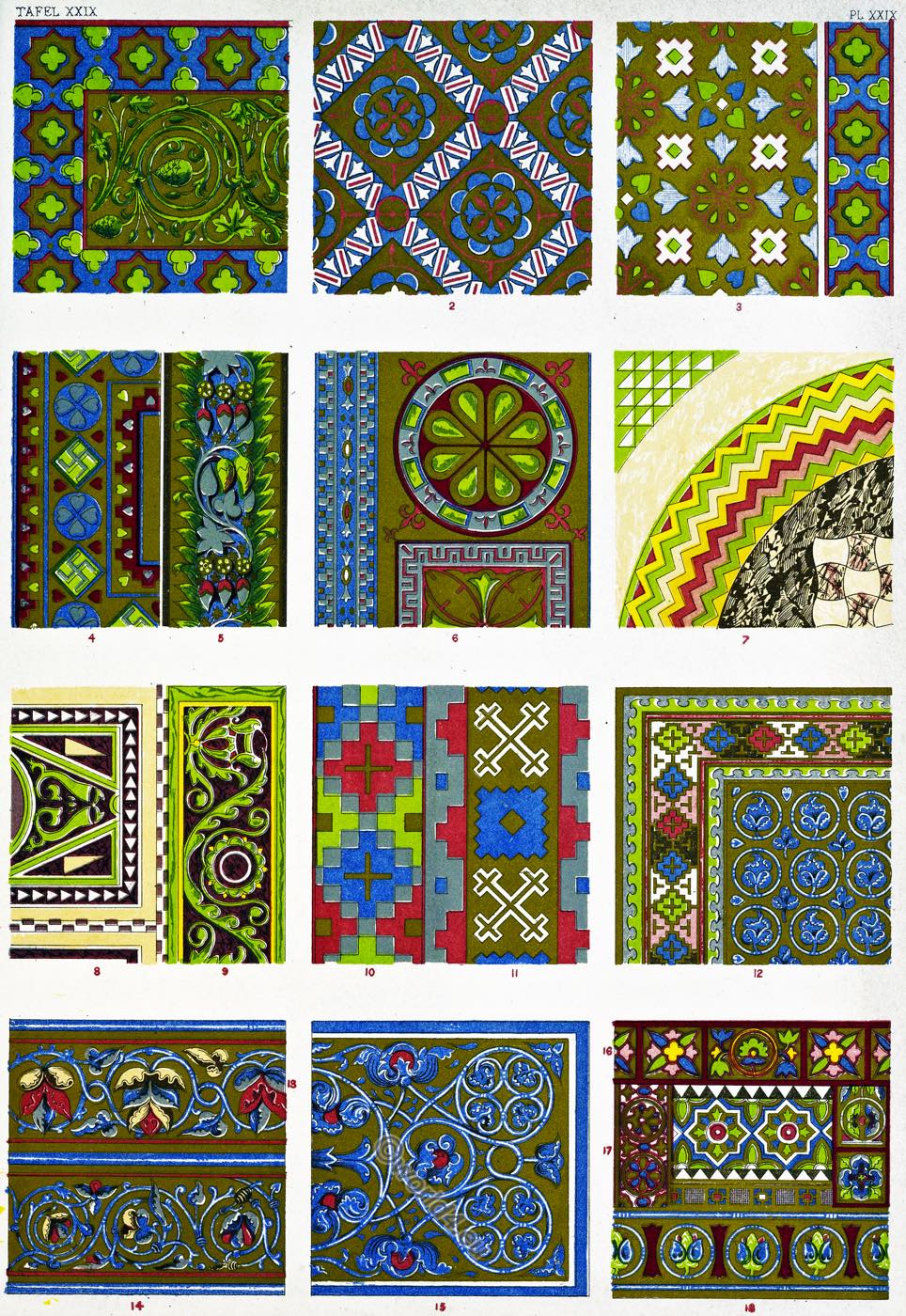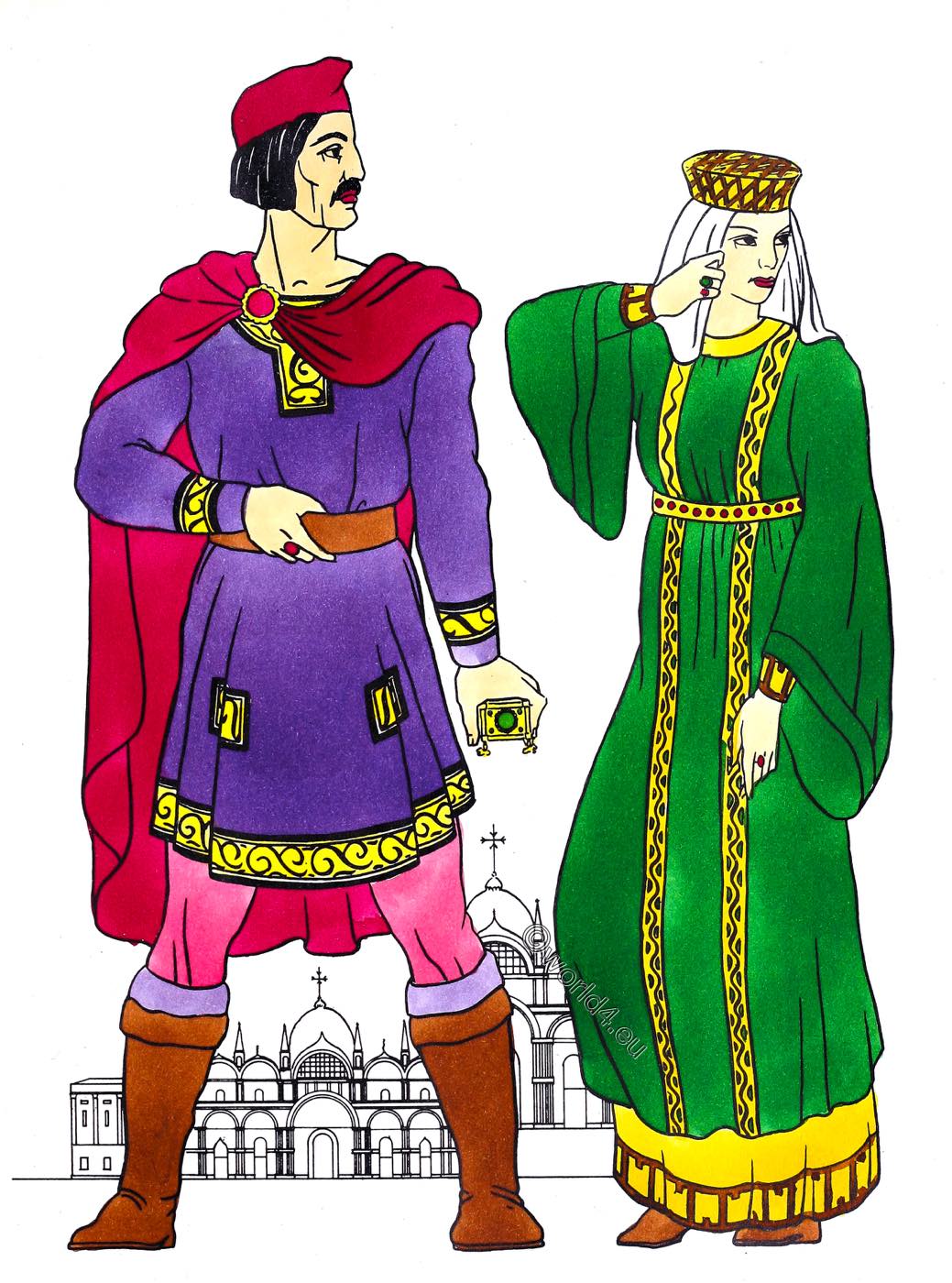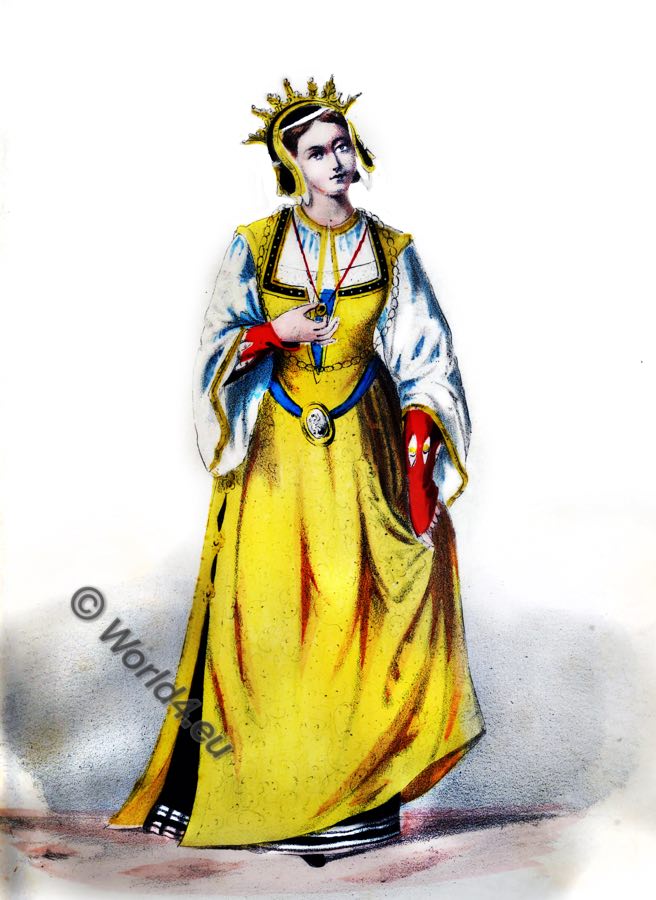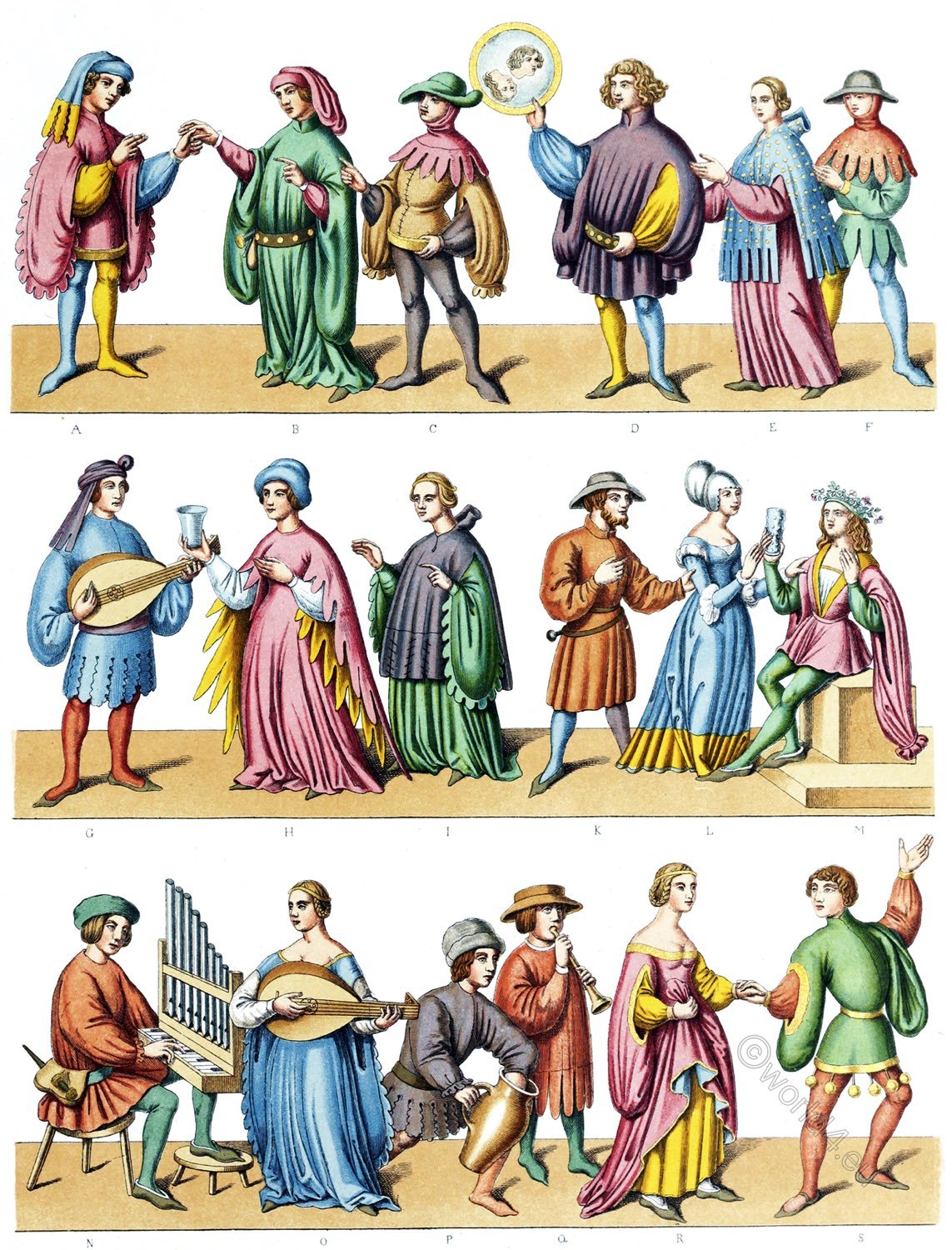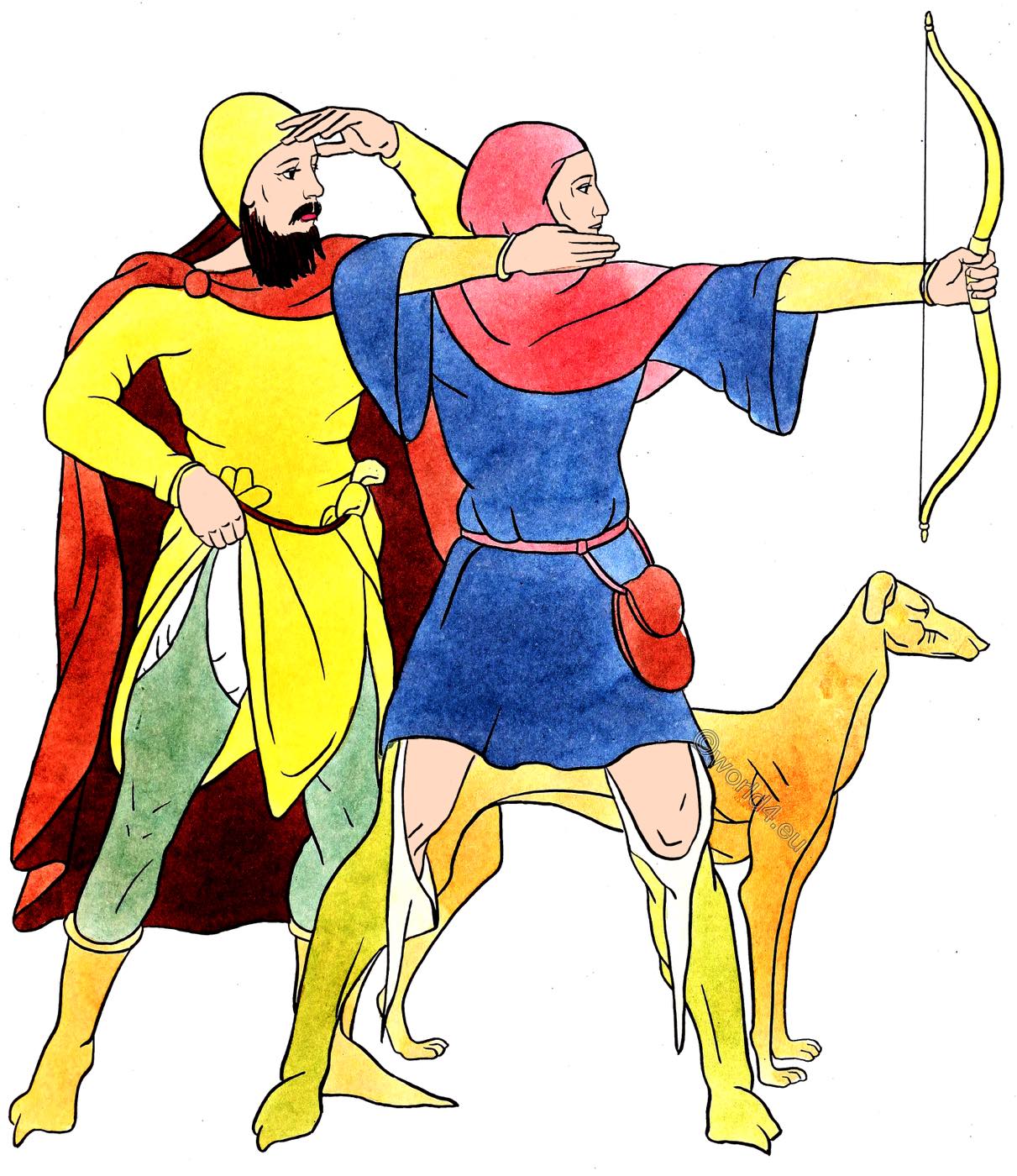
Plate No. 23
Middle Ages. Lower Class. 1000 to 1300 A.D
The two men in this picture might very well be, from the manner in which they are dressed, members of Robin Hood’s band — that famous group or robbers and hunters who roamed Sherwood Forest in Nottingham, late in the 12th century.
Both figures are dressed practically alike. The man on the left is wearing a long, tight-sleeved tunic that comes to slightly below the knees. To make running or any other form of exercise easier, he has taken the botton; corners of the tunic and tucked them into his girdle on each side. If this is difficult to understand, the picture shows very clearly just how he has done it.
His leg coverings are typical of the Middle Ages. Tho pointed boot like garments of green cloth or felt are called hose (in French, chausses). They are cut and sewn to fit the leg tightly, almost like a long stocking. They are wider at the top to fit the thigh and terminate in front in a long point that ties to the breech string. Each leg is separate and is pulled on over the foot like a boot. The archer has not fastened his. Notice how they are cut about the top. When shoes or boots were not worn, the hose were made with thin leather soles.
Observe that the figure on the left is wearing a white undergarment that covers the tops of his legs. These are a later development of the braccae or breeches shown in Plate 22. About 1150 A.D. these breeches became short undergarments – almost like short white drawers. They still fastened with a draw-string (the breech string mentioned above) and were tucked into the tops of the hose. The man with the bow and arrow has then also but his short tunic has covered them. The man looking after the arrow has put on, over the bottoms of his hose, soft leather boots with rolled-down tops. On his head he is wearing what is called a coif. It is a close fitting linen cap that covers the entire head, hair, and ears and ties under the chin. His cloak appears circular, though it might be only a half-circle or rectangle. On the right-hand corner is fastened a metal ring through which the material of the opposite edge is pushed and knotted. This was the usual method of fastening the cloak during the 12th century.
The archer is wearing two tunics — a short one with long tight sleeves and an over – one with wide, short, kimono-like sleeves. He is wearing hose, and attached to his girdle is a purse or wallet. These containers worn attached to the girdle or, for safety’s sake, to the breech-string under the tunic, were of all sizes and varieties and for all purposes. This one seems to be u large leather pouch.
He has covered his head and shoulders with a hood, the most common type of headgear for men at that time. It is a simple cowl, something like a loose-fitting coif attached to a short cape. It was cut usually in one piece and protected the entire head, neck, and shoulders.
Source: Museum Extension Project. History of Costume.

Related
Discover more from World4 Costume Culture History
Subscribe to get the latest posts sent to your email.

